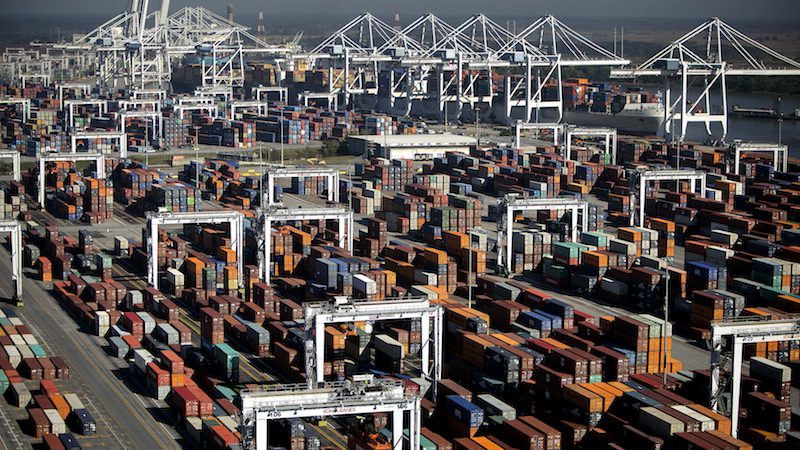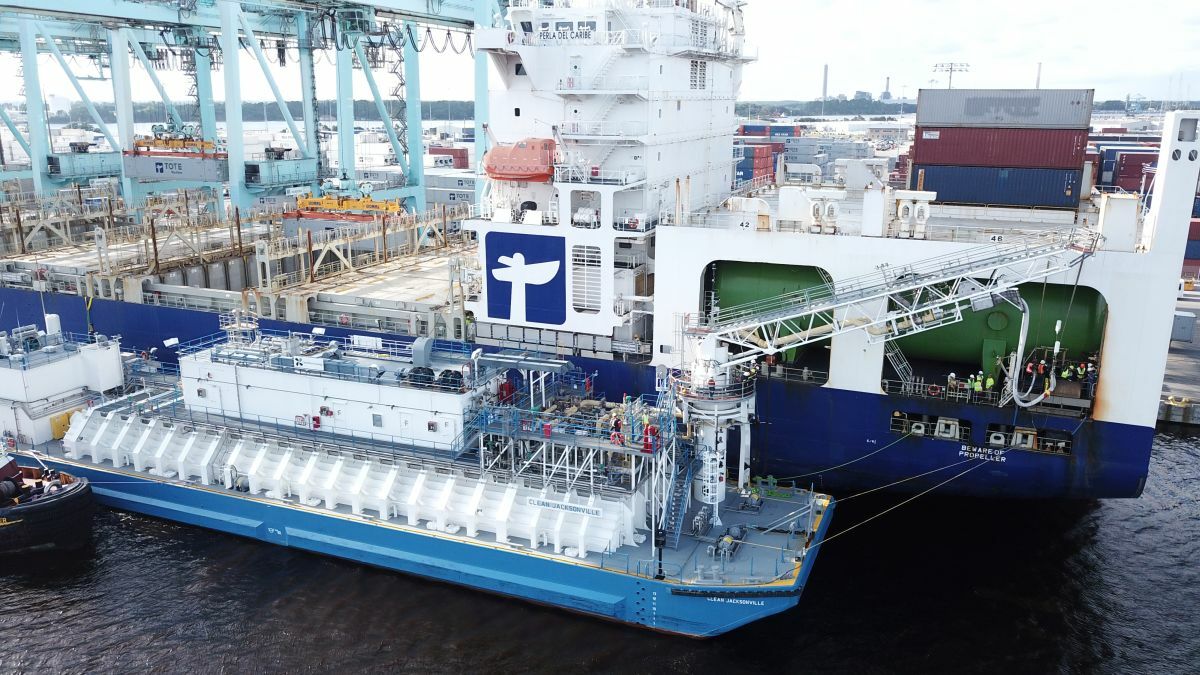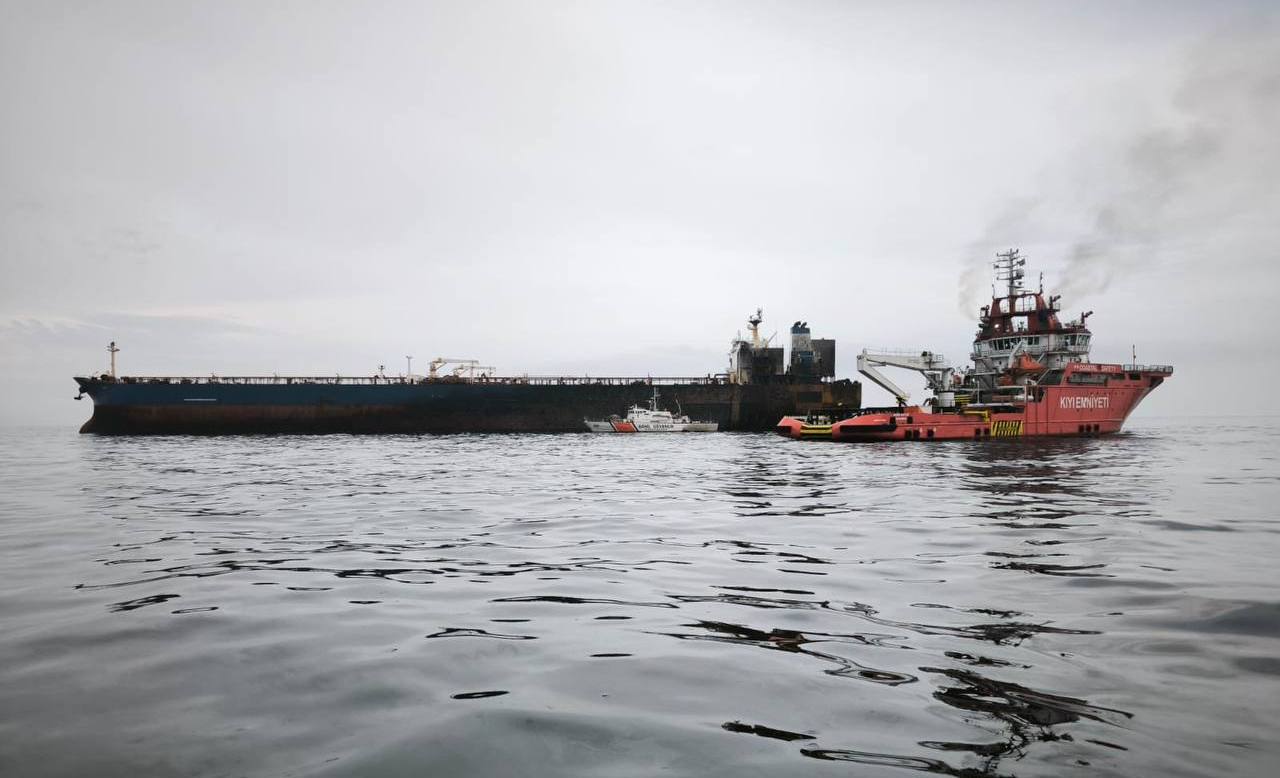Georgia Ports Authority Garden City Terminal in Savannah, Georgia. Photo credit: GPA Photo/Stephen B. Morton
(BIMCO) – 2015 was a busy year for container traffic on the eastern coast of the US. 7.9 million TEU of loaded containers entered the US East Coast in 2015, a 12.6% increase – compared to 7 million in 2014.
While the US East Coast ports experienced a surge in incoming traffic, labour issues and port congestion gloomed over the US West Coast.
The start of 2015 was dominated by the ongoing contract negotiations between the International Longshore and Warehouse Union (ILWU) and the Pacific Maritime Association (PMA). The conflict between the two parties led to substantial congestion at ports on the western coast, with dozens of ships anchored waiting for berths to open.
Chief Shipping Analyst, Peter Sand says, “As the conflict on the US West Coast dragged out, some of the traffic was diverted to US East Coast ports. These ports benefitted greatly from the diverted traffic but also from the fact that this happened at time when personal consumption of goods in the US was on the rise.
According to BIMCO’s data for 2015, US East Coast ports handled almost 900,000 TEUs more than in 2014. A rise of 12.6%. Imports via US West Coast ports rose at 0.4%.
Going forward, one of the big questions will be whether or not the US East Coast ports can hang on to this new business,” he added.
Imports peaked in March
Our US East Coast traffic data is based on a group of ports selected by BIMCO as a representative proxy for the region. When we look at the growth in 2015 on a monthly basis, the inbound loaded traffic was higher in the first 11 months of 2015 compared to 2014. Imports peaked in March with 711,000 TEU of loaded containers – almost 30% higher when compared to March 2014. Only in December did traffic underperform, declining 0.2% compared to 2014.
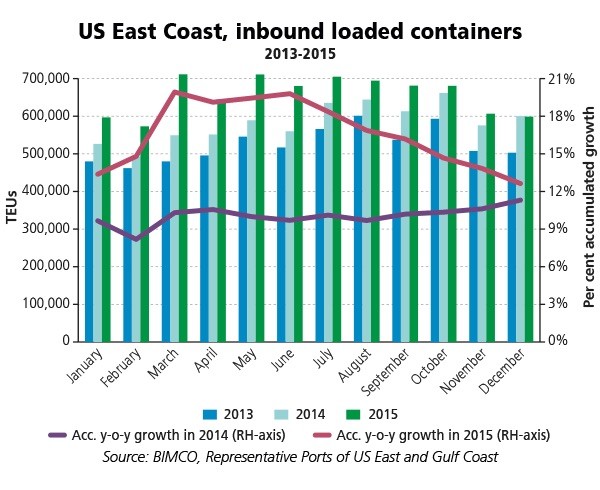
Strong growth across the board
The Port of New York and New Jersey (PANYNJ) manages the majority of the container trade on the US East Coast, with a total of 6.4 million TEUs handled in 2015. The amount of loaded containers that headed into PANYNJ grew by 9.2% in 2015, to a total of 3.2 million TEUs. Despite being the biggest player on the US East Coast, PANYNJ was not the only port to benefit from the growing traffic. Actually, all the ports on the US East Coast experienced strong growth in 2015. The Port of Savannah was the port that experienced the highest growth rate. Rising by 20.4% from 2014, 1.6 million TEU loaded containers entered Savannah in 2015.
On the US West Coast, the quantity of loaded containers entering the ports was virtually unchanged at 10 million TEU in 2015, growing only 0.4% from the previous year. One of the primary reasons for the low growth was the labour dispute, in addition to the subsequent port congestion.
The conflict reached its pinnacle in January and February. The number of inbound containers dropped by 26.7% in January, from 821,000 TEU in 2014 to only 602,000 in 2015. When the dispute was settled, trading quickly resumed and the inbound containers in March were nearly 40%t higher in 2015 compared to 2014. However, most of the increase in March came from the ships already anchored by the coast.
What about exports?
Contrary to the growing quantity of containers coming in to the US, the situation was different for outgoing containers. While more and more loaded containers were coming in, most of them were leaving empty. And the US West Coast ports were hit the most in this respect. Only 4.9 million TEU of loaded containers left a US West Coast port. This was a drop of 10.2% compared to 2014. On the US East Coast, 5.2 million TEU of loaded containers were exported in 2015. A slide of 0.4% when compared to 2014.
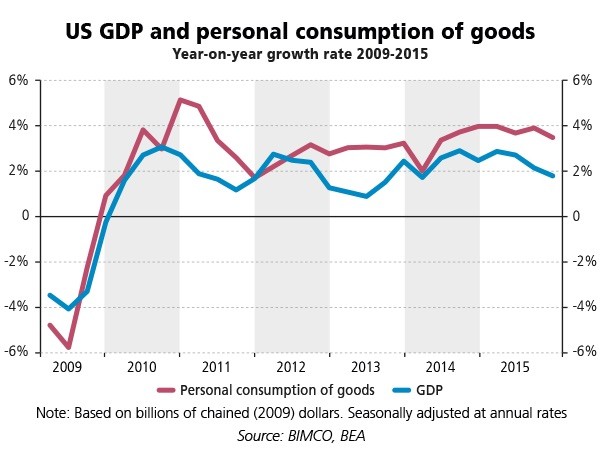
The declining commodity prices- with oil being the biggest game changer here – have increased the purchasing power of American consumers. This increase in disposable income boosted personal consumption of goods in 2015. As measured by the year-on-year quarterly growth rate, personal consumption expenditure, compiled by the US Bureau of Analysis, grew more than GDP in 2015. Personal consumption of goods affect the container trade and the increase in inbound containers to the US in 2015 was impacted by the rise in personal consumption in the US.
Peter Sand adds, “Despite two consecutive years of double-digit growth at US East Coast ports, it is important to note that the US West Coast ports still handle more volume.
The US West Coast ports handled 56% of the inbound loaded containers in to the US, according to BIMCO’s data in 2015, but have declined since 2012/2013 where 60% of the business was handled by the US West Coast ports.
Due to the expansion of the Panama Canal and the lower fuel costs brought about by the lower oil price, we expect to see even more of the Asian imports head towards the US East Coast ports. These ports are currently preparing to cater for ultra-large containerships in the near future.”

 Join The Club
Join The Club



